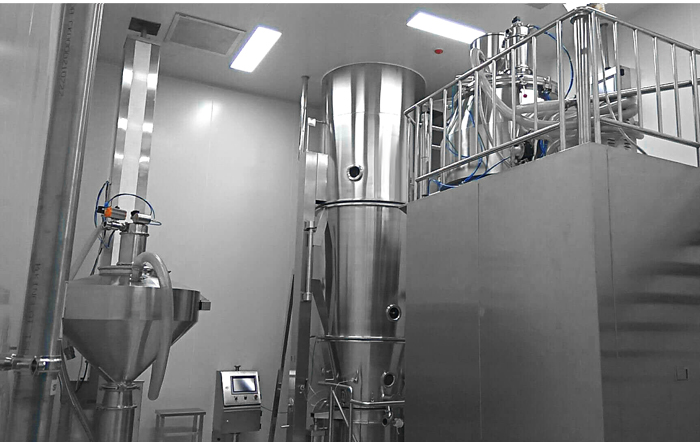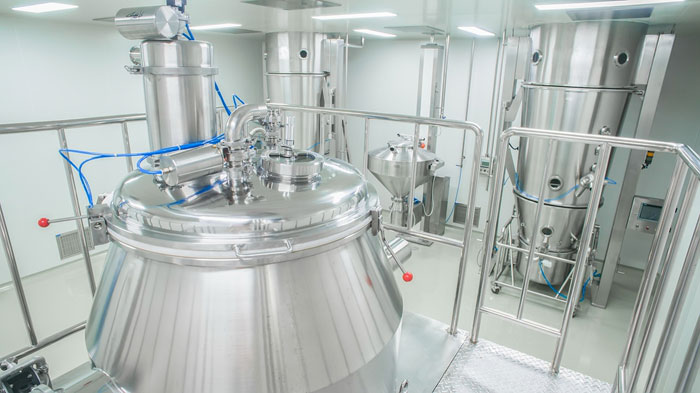
A Solid Dosage Granulation Line , granulation line is a specialized industrial equipment setup used in various industries, particularly in pharmaceuticals, chemicals, food processing, and fertilizer production.
Its primary purpose is to convert raw materials, often in powder or particulate form, into granules or pellets that are more uniform in size, shape, and density. Granules are easier to handle, transport, and store compared to powders, making them more suitable for various applications.
If you operate within the pharmaceutical manufacturing sector, it's imperative to consider acquiring our premium granulation line. This specialized pharmaceutical equipment is meticulously designed to eradicate any potential cross-contamination risks.
Our granulation line seamlessly integrates both the granulation and drying processes, ensuring a continuous and stable production flow.
This streamlined approach significantly amplifies the yield of finished products, optimizing your manufacturing efficiency.
With innovative features like the vacuum conveying device and the lifting turnover discharging system, we're dedicated to reducing labour intensity and eliminating dust pollution.
This dual benefit not only enhances operational cleanliness but also translates into substantial labour cost savings.
This advanced automation empowers you to effortlessly set operation parameters and process sequences. Furthermore, it facilitates historical data review and printing for your record-keeping needs.
An integral part of our Granulation line is the highly efficient WIP (Washing in Place) system. This cutting-edge system guarantees a thorough cleaning effect for both the granulator and dryer components.
Additionally, our granulation line boasts an ex-proof system, a comprehensive interlock mechanism, and thorough earthing, collectively ensuring the utmost safety for personnel, equipment, and the surrounding environment.
Here's a technical product description of a typical granulation line:
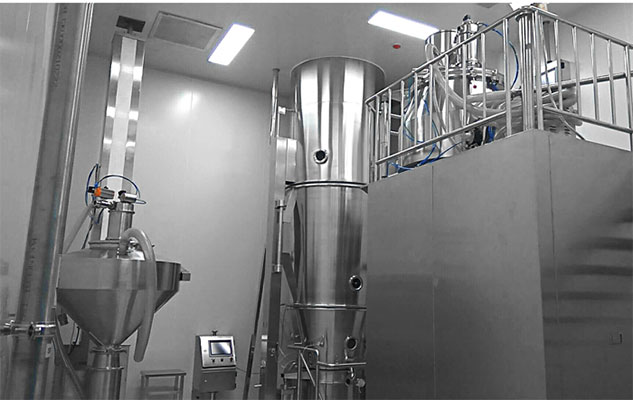
Product Name: Granulation Line
Description: The Granulation Line is a state-of-the-art industrial system designed for the efficient and consistent transformation of raw materials into granules. It incorporates a series of interconnected machines and processes to achieve high-quality granulation suitable for a wide range of industries.
Key Components:
- Material Handling System:
- This system involves the controlled transfer of raw materials from storage silos or containers to the granulation process.
- Precise material weighing and dosing mechanisms ensure accurate formulation of the granule mixture.
- Size Reduction (Optional):
- In cases where the raw materials are not in the desired size range, size reduction equipment such as crushers or mills may be integrated to achieve the required particle size before granulation.
- Mixing and Blending:
- The raw materials, including active ingredients, binders, and excipients, are mixed and blended to create a homogenous mixture. This step ensures uniform distribution of components throughout the granules.
- Granulation Process:
- Wet Granulation: In wet granulation, the mixed powder is moistened with a liquid binder solution to form cohesive granules. High-shear mixers or fluid bed processors are often used in this process.
- Dry Granulation: Dry granulation involves compacting the powder mixture into denser masses, which are then broken down into granules. This method is suitable for heat-sensitive or moisture-sensitive materials.
- Drying:
- After wet granulation, the granules are dried to reduce moisture content to the desired level. Fluid bed dryers or tray dryers are commonly used for this purpose.
- Sizing and Sieving:
- The dried granules may be screened or sieved to separate out any oversized or undersized particles, ensuring a consistent and uniform granule size.
- Tableting or Packaging:
- Depending on the intended use, the granules may be compressed into tablets using tablet presses. Alternatively, they can be packaged in suitable containers for distribution.
- Control and Automation:
- Modern granulation lines are equipped with advanced control systems that monitor and regulate various process parameters such as temperature, pressure, and material flow.
- Safety Features:
- The granulation line includes safety mechanisms to prevent overloading, overheating, and other potential hazards. Emergency stop buttons, interlocks, and alarms are commonly integrated.
Benefits:
- Improved flowability and handling of materials.
- Enhanced product uniformity and consistency.
- Reduced dust generation, leading to improved operator safety and cleaner working environment.
- Higher product density, leading to reduced storage and transportation costs.
- Automation and control systems ensure accurate and repeatable processes.
Applications: The Granulation Line finds applications in various industries including pharmaceuticals (for tablet production), chemicals (for fertilizer and pesticide granules), food processing (for cereal and snack production), and more.
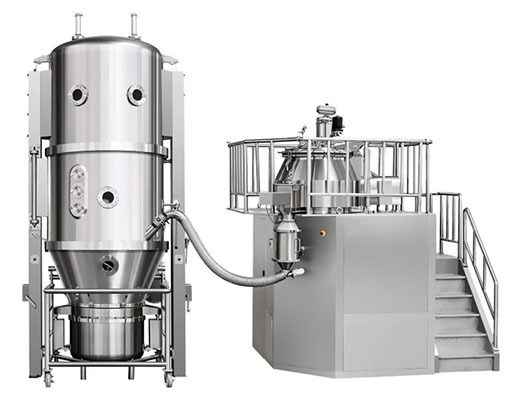
Certainly, here are some key features commonly found in a modern granulation line:
- Modular Design: Granulation lines often feature a modular design, allowing customization and scalability to meet specific production needs. Additional modules can be added or modified based on the desired capacity and processes.
- Process Automation: Advanced control systems and human-machine interfaces (HMIs) provide real-time monitoring and control of process parameters. Automation ensures consistent and precise granulation results, minimizing human error.
- Recipe Management: Granulation lines can store and manage multiple formulations, allowing operators to easily switch between different product recipes without extensive manual adjustments.
- Material Tracking and Tracing: Granulation lines equipped with traceability features enable the tracking of raw materials and granule batches, enhancing quality control and regulatory compliance.
- Process Validation: The system may offer process validation features to ensure that the granulation process consistently produces the desired quality and attributes. This is particularly important in industries like pharmaceuticals.
- High Shear Mixing: If wet granulation is employed, high shear mixers or granulators are used to ensure thorough mixing and uniform distribution of the binder solution within the powder mixture.
- Fluid Bed Processing: Some lines incorporate fluid bed processors for drying and cooling granules. These systems efficiently remove moisture while preventing agglomeration.
- Roller Compaction (Dry Granulation): For dry granulation, roller compaction units compact the powder mixture into flakes, which are then milled and sieved to produce granules.
- Sieve Decks and Screens: Integrated sieve decks and screens effectively separate granules of desired size from undersized or oversized particles, contributing to consistent product quality.
- Dust Collection and Containment: Granulation lines feature dust collection systems to minimize airborne dust, ensuring a cleaner working environment and reducing cross-contamination risks.
- Material Feeding Mechanisms: Precise material feeding systems, such as gravimetric or volumetric feeders, ensure accurate dosing of raw materials, leading to consistent product quality.
- In-Process Monitoring: Real-time sensors and probes can monitor parameters like temperature, moisture content, and pressure during the granulation process, enabling adjustments as needed.
- Energy Efficiency: Many modern granulation lines incorporate energy-saving features, optimizing processes to reduce energy consumption and operating costs.
- Safety Interlocks: Granulation lines are equipped with safety interlocks and emergency stop mechanisms to ensure operator safety and prevent accidents.
- Remote Monitoring and Control: Some systems offer remote access capabilities, enabling operators and managers to monitor and control the granulation line from a distance, improving operational flexibility.
- Cleaning and Maintenance: Easy-to-clean designs and quick-change parts reduce downtime during cleaning and maintenance operations.
- Quality Documentation and Reporting: Granulation lines may generate detailed reports on process parameters, deviations, and quality metrics, aiding in quality assurance and compliance.
- Compliance with Regulatory Standards: Granulation lines designed for pharmaceutical or food industries adhere to strict regulatory guidelines, incorporating features to meet Good Manufacturing Practices (GMP) and other industry-specific requirements.
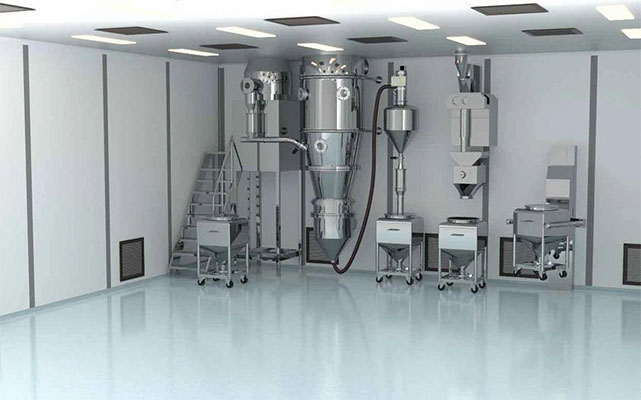
Remember that the features mentioned can vary based on the specific manufacturer, industry, and intended use of the granulation line.

